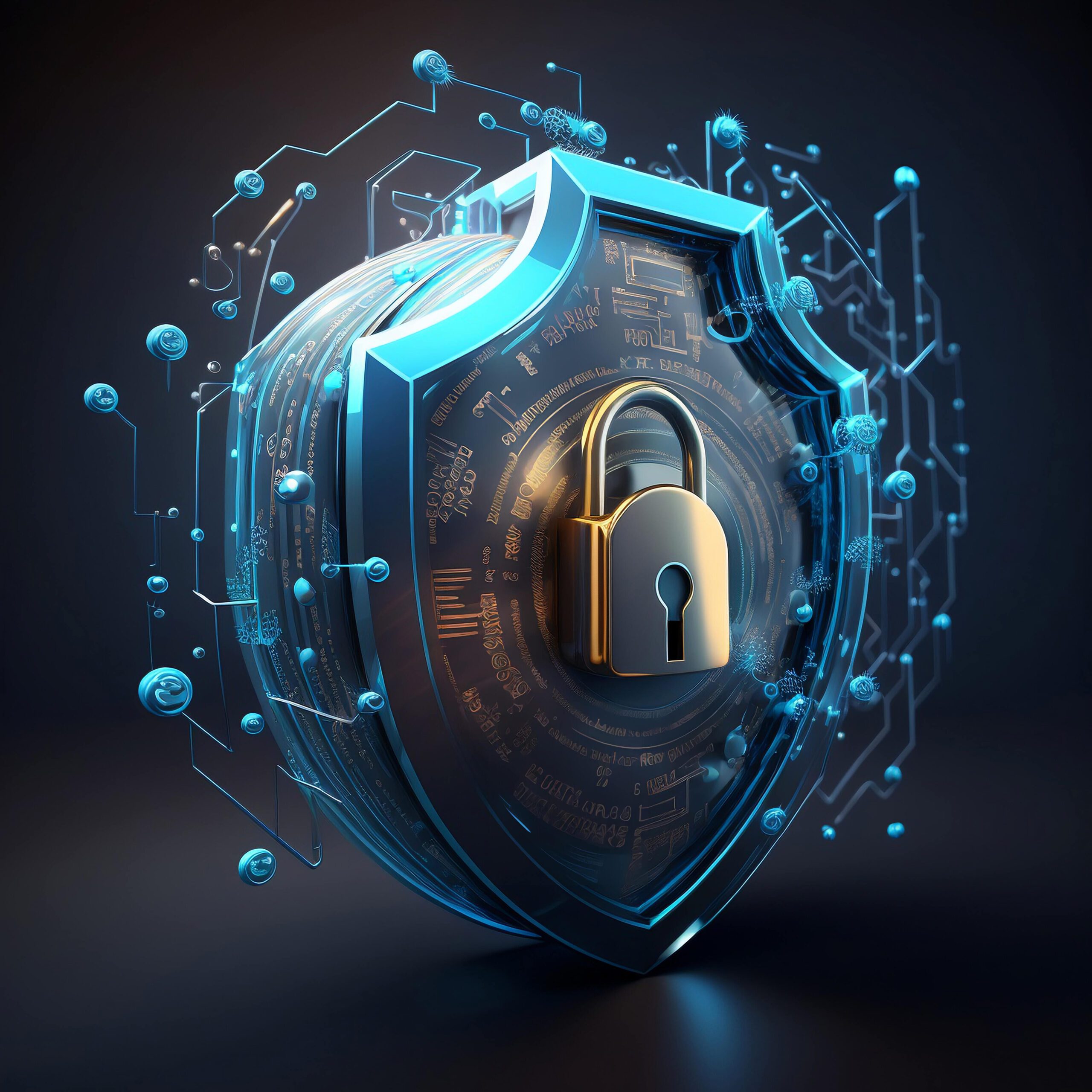Which IPSec Subprotocol Provides Best Data Encryption? The answer, which is fairly dynamic in terms of internet security, is IPSec (IP Security), a formidable fortress that provides protocols to harden communications over IP networks. Among them are Authentication Header (AH) and Encapsulating Security Payload (ESP). This article explores the intricacies of ESP as a data encryption sub-protocol.
Thank you for reading this post, don't forget to subscribe!Introduction to IPSec

Internet security has become an increasingly important topic in the digital era and as such, IPSec acts as its guardian by ensuring that transmitted information over IP networks is kept confidential, intact, or authenticated. These are some of the threats that are being examined by two major subprotocols within the IPSec model—Authentication Header (AH) and Encapsulating Security Payload (ESP)—in providing a strong defensive system.
IPSec Subprotocols: AH and ESP is Which IPSec Subprotocol Provides Best Data Encryption?
IPSec is designed to secure communication on IP networks with a group of protocols. Inside this suite, there are two fundamental sub-protocols, namely Authentication Header (AH) and Encapsulating Security Payload(ESP), which serve unique purposes in order to enhance data transmission’s confidentiality.
Explanation of Authentication Header (AH) in Which IPSec Subprotocol Provides Best Data Encryption?
Authentication Header (AH) is a part of IPSec protocol suite. It ensures the integrity and authenticity of the transmitted data by appending a header to IP packets containing cryptographic hashes and checksums. These hashes are computed based on packet content including payload, and parts of the selected header.
Key Functions of Authentication Header (AH):
- Integrity: Data tampering during transmission is protected by AH. Furthermore, these included hashes enable the receiver to verify that there has been no alteration in transit.
- Authenticity: This means that it can be used to check whether the sender is genuine or not by adding digital signatures to its packets. Thus, it blocks any attempts made by unauthorized individuals who may want to impersonate an authentic source.
- Limited confidentiality: Hence, while ensuring packet content remains hidden, AH does not serve as an encryption service since plaintext inconsistency may still occur allowing interceptions of actual data.
Focus on Encapsulating Security Payload (ESP) for Which IPSec Subprotocol Provides Best Data Encryption?

Encapsulating Security Payload (ESP) is another crucial IPSec subprotocol, with its primary function centered around data encryption. Unlike AH, which primarily focuses on authentication and integrity, ESP operates at the transport layer and provides a more comprehensive solution for securing the payload of IP packets.
Key Functions of Encapsulating Security Payload (ESP):
- Confidentiality: The primary role of ESP is to ensure the confidentiality of the data being transmitted. It achieves this by encrypting the payload of the IP packets, making it indecipherable to unauthorized entities.
- Integrity: Similar to AH, ESP also verifies the integrity of the transmitted data. By using cryptographic mechanisms, ESP safeguards against any attempts to tamper with the encrypted content.
- Authentication: Similarly In conclusion not as robust as AH in authentication, ESP can provide an additional layer of authentication through its use of cryptographic techniques. AH is often paired with it for a more comprehensive security approach.
Choosing Encryption Algorithms for Which IPSec Subprotocol Provides Best Data Encryption?
Encapsulating Security Payload (ESP) is another important IPSec subprotocol which focuses on data encryption. ESP unlike AH operates at transport layer thus offering a comprehensive solution for securing IP packet payloads instead of only authentication and integrity aspects.
ESP in Action: Secure Data Transmission
In the same way, let us now consider some examples of how ESP secures IP packet payloads. In the financial industry, electronic transfer of funds is an important aspect of every transaction. Other examples include e-commerce sites and online banking where sensitive information is traded. This article explores how ESP can be used to encrypt and authenticate data.
Considerations for Effective Encryption
However, one should bear in mind that encryption has its downsides as well as upsides. Key length, algorithm complexity and processing overhead are examples of these considerations.
Common Challenges in Data Encryption
Nonetheless, implementing robust measures for encrypting data comes with some challenges too. There are common issues relating to key management, interoperability and performance impact which have been highlighted in this section.
Impact of ESP on Internet Security

Besides mere dat encripton duties, ESP has another role. It also makes a significant contribution to security on the internet at large by getting involved with other security measures against new threats.
Role of Encryption in Digital Communication
Today’s society relies heavily on digital communications; encryption is fundamental for this reason alone. To understand why encryption is important for protecting online interactions is essential to individuals as well as companies.
Encryption Algorithms Comparison
Through this, we can see that a detailed evaluation of encryption algorithms such as Advanced Encryption Standard (AES), Data Encryption Standard (DES) and Triple Data Encryption Algorithm (3DES) provides a clear understanding of the strong points and drawbacks of these techniques. Also It enables the decision makers to make rational choices about their specific security requirements.
ESP Configuration Best Practices
To ensure maximum security, configuring ESP must be done with great care. However The following section addresses some best practices for ESP configuration that will help improve the efficiency of data encryption sub-protocol.
ESP and VPNs
Virtual Private Networks depend on ESP for creating secure and private paths for communication. This elucidates the interdependence between VPNs and ESP in enhancing online security.
Future Trends in Data Encryption in Security IPSec Subprotocol
Data encryption is an ever-changing subject, which requires an insight into new developments in the field for strong cyber security measures. Additionally Again let us look at some of what could be expected as future trends in data encryption, and how it can be predicted what Encapsulating Security Payload (ESP) will become or how data security will evolve.
Emerging Technologies in Data Encryption
1. Quantum Encryption:
• The advent of quantum computing also calls for quantum-resistant encryption. Furthermore Quantum physics based cryptographic schemes are therefore a new approach to protecting sensitive information.
2. Homomorphic Encryption:
• Encryption has made it possible to carry out computations on encrypted data without having to decrypt the data. This is a new approach that provides for the safe processing of information in the cloud while still keeping it secret.
3. Post-Quantum Cryptography:
• In case quantum computers break current encryption algorithms, there should be development of post-quantum cryptographic algorithms. On top of that these algorithms are designed to resist quantum machines computing power.
4. Blockchain-based Encryption:
• To sum up Incorporating blockchain technology and encryption ensures decentralized and tamper-proof data protection. This emerging trend guarantees integrity and transparency of information specifically in sectors such as finance and healthcare.
Predictions for the Future of ESP and Data Security IPSec Subprotocol
1. Enhanced Encryption Standards:
- For instance, The future of ESP lies in the continuous enhancement of encryption standards. This includes adopting more sophisticated encryption algorithms as well as developing alternative methods that can withstand changing cyber threats.
2. Integration with AI and Machine Learning:
- ESP is poised to blend better with artificial intelligence (AI) and machine learning (ML) algorithms. This can help improve threat detection, enable encryption strategies to evolve dynamically, and manage risks in real-time.
3. Focus on User-Friendly Encryption: Security IPSec Subprotocol
- To illustrate, ESP future improvements may prioritize easy to use encryption solutions. However, for such systems to be adopted widely in different sectors, it will be important to make the process of encryption friendlier to users.
4. Cross-Platform Compatibility:
- As digital ecosystems become more connected, it is expected ESP will adapt to ensure better cross-platform compatibility. This way enables communication that is both secure and consistent on any kind of devices or over any network.
5. Zero-Trust Security Models:
- In zero-trust security models the future of ESP would be broader. This means that all entities inside or outside a network are not trusted by default and continuous verification and authorization must occur before access.
6. Increased Use in IoT Security:
- As the Internet of Things (IoT) continues its expansion, ESP will have an essential role in securing huge quantities of data exchanged between IoT devices. For example these can include light weight encryption solutions good for resource limited devices.
Conclusion
The data encryption landscape is undergoing a transformation due to advanced technologies like quantum encryption, homomorphic encryption and blockchain-based security. The role of ESP in visualizing the future of data security is crucial. ESP can be expected to lead in securing digital communication through anticipation of improved encryption standards, integration with AI and user focus.
In today’s dynamic cybersecurity environment, understanding the complexities of data encryption specifically within IPSec framework is essential. Through studying Encapsulating Security Payload (ESP) and internet security as a whole, one comes to the realization that the future holds exciting prospects for this field.
This development has resulted in an ESP that caters for a world that is interconnected across various platforms with emphasis on zero-trust security models and issues linked to IoT. In conclusion, our analysis showed that data protection journey is still ongoing but with ESP at the forefront we are better placed to handle the intricacies of digitized frontier.
Read More: Which IPSec Subprotocol Provides Best Data Encryption?


